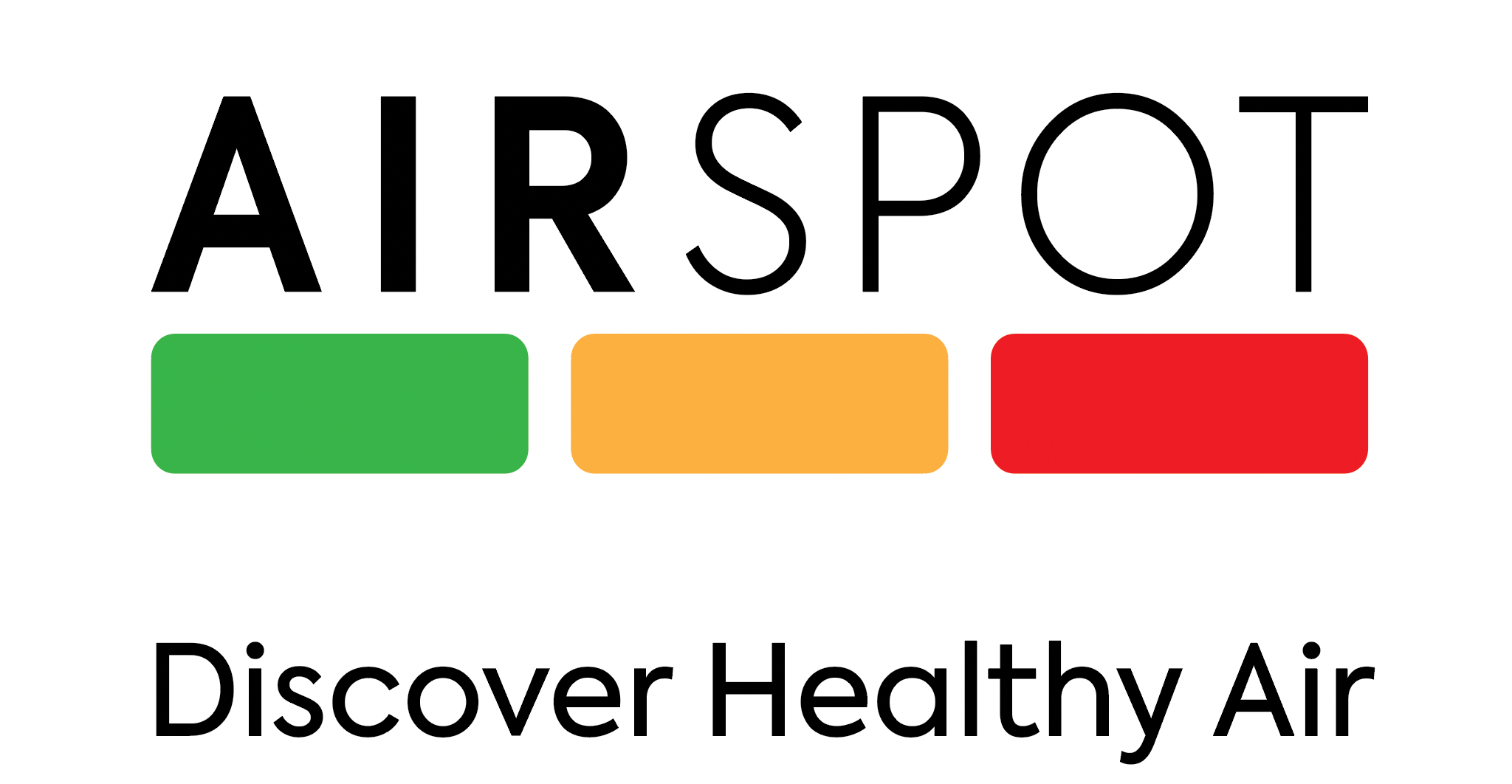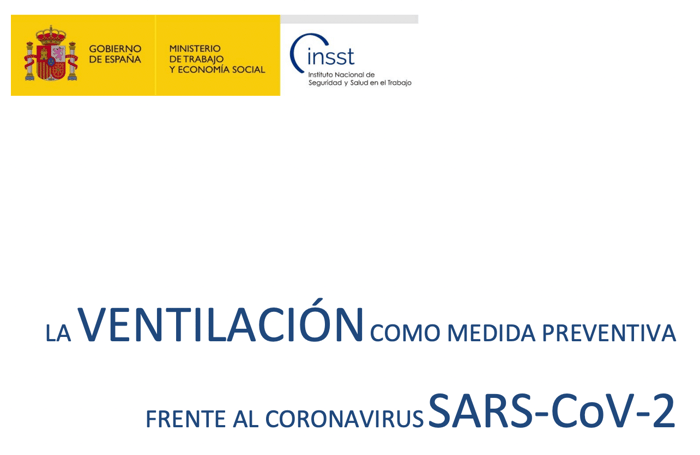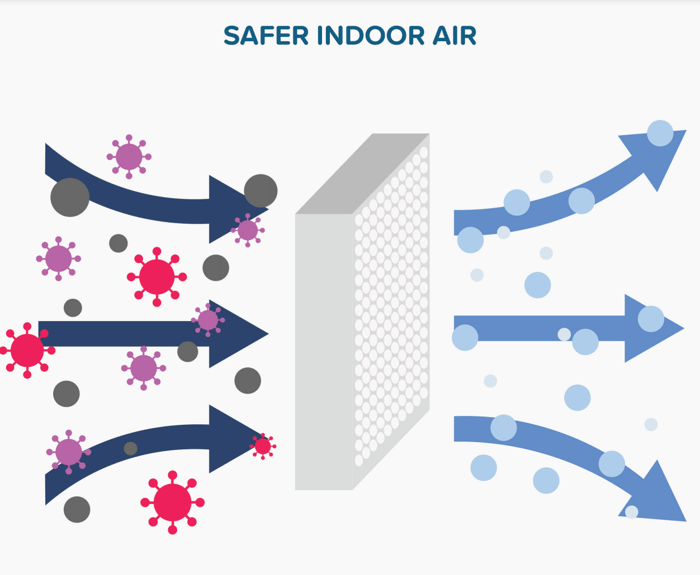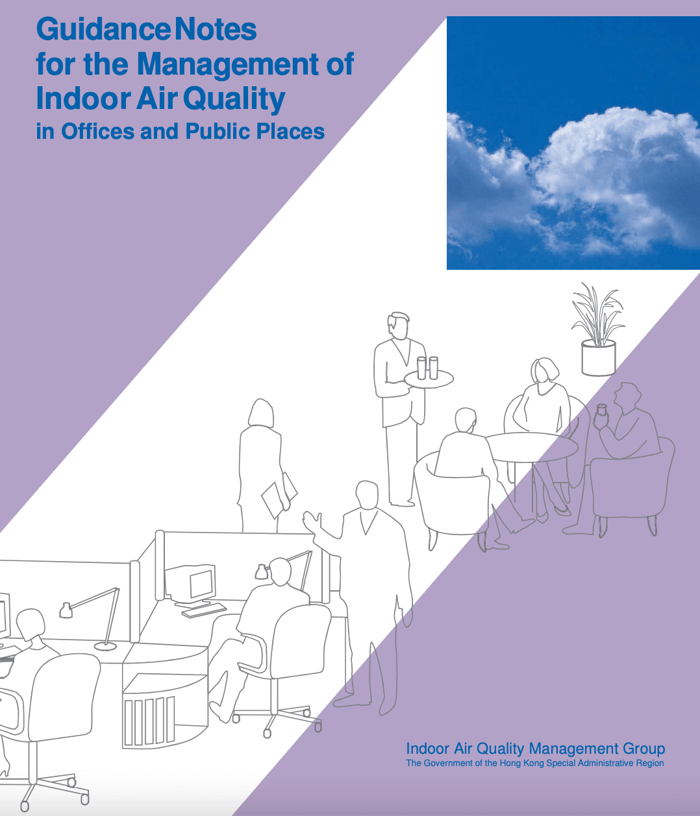Spanish
INTRODUCTION
Infection with the SARS-CoV-2 coronavirus, unknown until the outbreak that broke out in Wuhan
(China) in December 2019, has become a pandemic with a great impact
health, social and economic in most countries of the world.
Since then, numerous studies and articles have been published on the behavior
of SARS-CoV-2, its viability, survival, spread and transmission. In this sense, a
of the latest conclusions drawn by the investigations and that have been accepted
recently by the Ministry of Health, is the transmission of this coronavirus through
aerosols.
Considering this route of transmission, ventilation plays a key role as a measure
preventive against the spread of the virus in indoor environments, contributing to the
reduction of infections, and this has been demonstrated by the World Health Organization
(WHO) [1].
Its importance is such that the need to adopt preventive measures linked to ventilation
in work centers is established by Royal Decree-Law 21/2020, of June 9, of
urgent prevention, containment and coordination measures to address the crisis
health caused by COVID-19.
This regulation, in its article 7, includes a set of prevention and hygiene measures to
adopt in workplaces, without prejudice to compliance with prevention regulations
of occupational risks and the rest of the labor regulations that may be applicable. Specifically,
establishes the need to “adopt ventilation, cleaning and disinfection measures appropriate to
the characteristics and intensity of use of the work centers, in accordance with the protocols that
are established in each case.”
On November 18, 2020, the Ministry of Health has published a document
technical in this regard: “Assessment of the risk of SARS-CoV-2 transmission through aerosols.
Prevention measures and recommendations.”
In view of the above and taking into account the new information that arises in
In relation to this transmission route, this document includes the basic concepts of
ventilation as a preventive measure against the transmission of SARS-CoV-2 by aerosols in
workplaces, as well as sources of information that may be useful, so
in accordance with the criteria of the competent authorities.
IMPORTANCE OF VENTILATION AS A PREVENTIVE MEASURE
Ventilation is the process of renewing air in a room, that is, it consists of
providing clean outside air to a building or room.
The supply of outside air is essential to clean the air that is breathed in a premises and dilute the
contaminants that arise.
The Regulation of Thermal Installations in Buildings (RITE) classifies air quality
indoor, defined as air in the treated area or area, in four categories (IDA, Indoor Air),
depending on the use of the buildings, proposing in each case an external air flow per
person (see table 2).
The RITE recommends an outdoor air flow rate of 12.5 l/s per person for an IDA 2 (air quality).
indoor air), which reflects good quality air.
For ventilation to be effective, it is necessary that the amount of clean air supplied be
adequate and that this flow is distributed efficiently throughout the premises, so that the
pollutants generated in different parts of the premises are evacuated effectively.
A measure used as an indicator of indoor air quality is to use the level of the
CO₂ concentration, since this is a good indicator of bioeffluent emissions
humans. The RITE establishes CO₂ concentration values (in parts per million or ppm)
A CO₂ concentration greater than 800-1000 ppm could be an indicator of ventilation
deficient premises [15].
Ventilation can be achieved by natural means, by mechanical or mixed means.
Natural ventilation is that which is achieved by non-mechanical means (normally
opening doors and windows), taking advantage of the pressure differences generated by a
gradient, either due to temperature or due to the action of the wind. It can be effective at a low
cost; However, it depends on the weather conditions outside, the design of the
building and the occupation and activities carried out by people. The greatest efficiency is
achieved with natural cross ventilation, that is, with the opening of two openings in
opposite walls.
Mechanical ventilation, on the other hand, controls the entry and exit of air, so
It is not so influenced by the outside weather and allows the flow to be controlled.
introduced, although its installation and maintenance are more expensive. Even in the case of
If there is mechanical ventilation, it is recommended to regularly perform natural ventilation,
As we have already indicated, opening doors and windows, and getting good ventilation
combined, although this implies a loss of energy efficiency [4, 12, 16].
Recirculation of air in the premises is not recommended, since this will not reduce the
concentration of bioaerosols that could contain the virus and their dilution will not be guaranteed
[16].
To read more click on this link: https://www.insst.es/documents/94886/712877/La+ventilaci%C3%B3n+como+medida+preventiva+frente+al+coronavirus+SARS-CoV-2.pdf/7d80e9f3-2b44-7e37-8af2-7ab105621070?t=1626298548369#:~:text=Considerando%20esta%20v%C3%ADa%20de%20transmisi%C3%B3n,(OMS)%20%5B1%5D.





